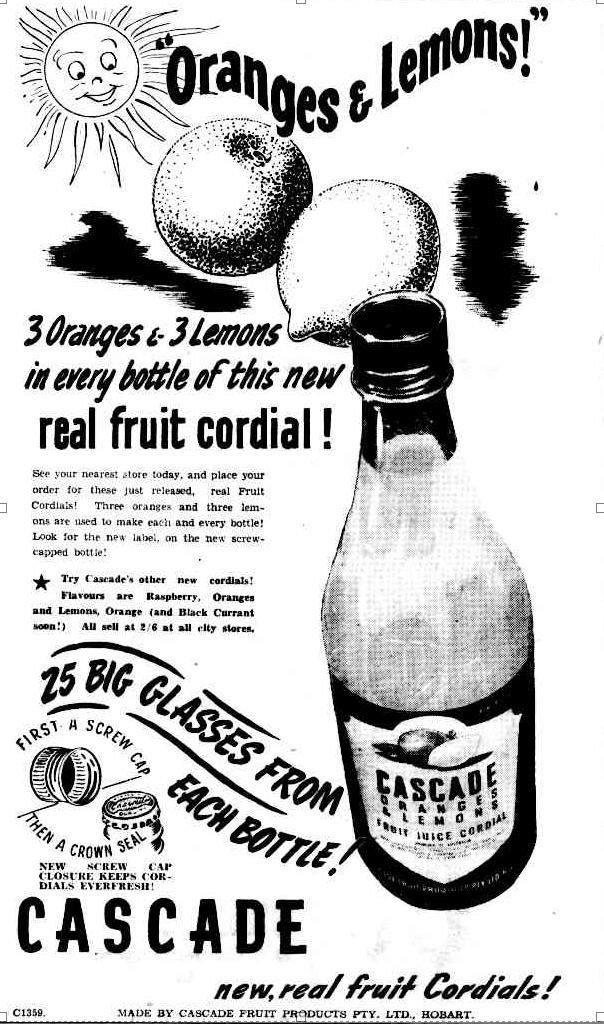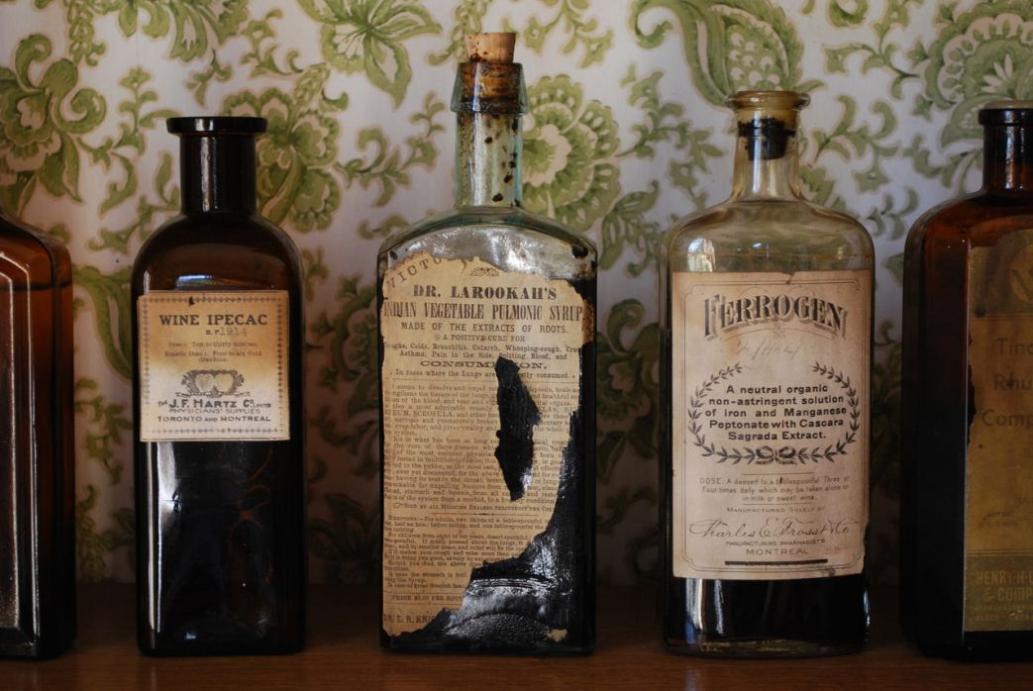Healthful Cordials And Cleansing Tonics
Cordials and tonics were originally medicinal, they were for health, for restoring health, for maintaining health, for cleansing during certain seasons – cleansing one of those colds that occur during the turnover of seasons when it’s hot-cold-middling-cold-hot again.
Did you know that many of these original cordials were simply versions of tonics and ways to preserve fruits, and what they helped restore in health, for use year round. Lime cordial, for instance, was based on sailors avoiding scurvy when at sea on long voyages.
Although on checking many of these early recipes ‘best white sugar’ is a large portion of the list of ingredients, in fact the mainstay after 1 quart of any particular fruit, you can of course choose to use less should you choose to try out some of the recipes for same.
As we’re heading into berry season – strawberries, raspberries, and having grown up on original Cascade Blackcurrant cordial, failsafe during Winter as a guardian against colds, or eaten them straight from among their green leaves, as well as palate cleaning citrus or ginger recipes doled out by a great-grandmother and grandmother who knew their stuff, a few of these may be ideal for those who want something nice for the body with a bit of a naughty twist. They’re easy to make, will last well in some cases, and don’t take hours as can be required when you’re making jam or using a butter churn to make butter, but will most definitely put a ‘Spring’ back into your step.
Apart from mixing some up and freezing them to make unique iced treats fr Summer where you control their sugar intake, these can also be mixers for some pretty scrumptious drinks when you have friends over for Christmas, New Years and Summer celebrations- chin-chin!
If the price of fresh berries seems exorbitant just remember you can opt for the frozen variety – choose Australian grown ones of course – while when you see punnets or trays marked down and cheap, grab them.
We’ve included a few favourites from our jam-making, butter churning childhood, and a few of historical note here. Please bear in mind should you be tempted to try out the older recipes that if you are on medications you must consult your GP regarding herbal infusions to ensure nothing conflicts with anything you are taking at present.
It would be good to bear in mind in some of these that the ingredients used are passé and may be difficult to obtain having been relegated to now being ‘Heirloom’ vegetables or fruits or the advancement of knowledge has pointed out better alternatives and that the body won’t absorb some ingredients.
Example – Ginko Biloba is great for thinking or tinnitus and those doing exams but part of this works in it increasing or thinning your blood – so definitely a no-no for those already on beta-blockers, blood tinners for the heart or other reasons.
Example of another ilk – Epsom salts, although they do detox the body of metals, are not easily consumed through the stomach – probably better to leave that out of your Olde Worlde Orangade as shown below and soak in a tub of them instead!
For bottles to store them in perhaps persuade the ale lover to drink some of those varieties that come with that spring back on top or visit a homewares store to purchase the same. Many of these homemade cordials and tonics will keep if you seal and store them correctly. Humidity can be circumvented by placing them in the fridge. Sealing is the vital point here – the ingredients will cause something to be preserved, jam-like (‘preserves’) but air is also an ager in this case and will ferment or turn the cordials and tonics if they’re not sealed correctly.
These recipes are proof positive that the best way to maintain good health is to consume fruits, herbs and vegetables that have properties to address what ails thee – and here you may, literally, drink your way to good health. For something cool and refreshing as the weather warms, this is what your body is calling for… water, more water, and health giving fruits, herbs and vegetables mixed in that water.
Raspberry cordial
Even quite recently the health promoting and health restoring properties of this ancient fruit were revisited by Dr Heather Cavanagh, a senior lecturer in microbiology at the School of Biomedical Sciences at Charles Sturt University in an interview with Claudine Ryan.
Cavanagh first became interested in the use of raspberry cordial as a preventative and treatment of stomach bugs when she heard that some farmers in parts of New South Wales and Victoria were adding raspberry cordial to their livestock's drinking water to treat diarrhoea. She also began to hear stories of other people using raspberry cordial to treat stomach bugs: "I heard anecdotal reports from as far away as Queensland and Western Australia, I heard of how people used it to treat themselves and their family. Not just their animals".
The tests showed that raspberry and blackcurrant cordials with at least 35% did kill bugs – although this wasn’t analysed in humans –
ABC Health & Wellbeing – Face Buster, Claudine Ryan. Q: Can raspberry cordial kill stomach bugs in contaminated water? A: Yes. Raspberry and blackcurrant cordials can kill bacteria that cause some stomach bugs. Published 21/01/2010. Retrieved from
www.abc.net.au/health/talkinghealth/factbuster/stories/2010/01/21/2797762.htm
Raspberry Cordial recipe
500g raspberry
500g caster sugar
3 tbsp red wine vinegar
Put the raspberries in a pan with the sugar and vinegar. Mash over a low heat for 10 mins until smooth and syrupy. Rub through a sieve into a clean pan. Tip the seeds from the sieve into a bowl and stir in 300ml water, then sieve again to remove the last of the pulp from seeds. Pour the liquid into the pan with the sieved pulp, stir well and boil for 1 min. Pour into small sterilised bottles and seal. The cordial will keep unopened for a few months. Once opened, store in the fridge
Raspberry and Lime Cordial
3/4 cup (175g) caster sugar
1/3 cup (80ml) lime juice
1/2 cup (125ml) water
1 cup (250ml) grapefruit juice
300g fresh or frozen raspberries
Put caster sugar, lime juice, water and grapefruit juice in a saucepan. Stir over a low heat until the sugar dissolves.
Add raspberries and cook for 2 minutes or until the raspberries break up slightly. Remove from the heat and cool slightly. Strain the cordial into a jug and discard raspberry pulp.
Pour the cordial into clean bottles and keep in the fridge for up to 3 weeks.
To serve: Add a couple of tablespoons of cordial to chilled soda water or lemonade.
The raspberry is the edible fruit of a multitude of plant species in the genus Rubus of the rose family, most of which are in the subgenus Idaeobatus; the name also applies to these plants themselves. Until recently, the most commonly cultivated raspberries have been red-fruited hybrids between R. idaeus and R. strigosus.
Raspberry derives its name from raspise, "a sweet rose-colored wine" (mid-15th Century), from the Anglo-Latin, vinum raspeys, or from raspoie, meaning "thicket," of Germanic origin. The name may have been influenced by its appearance as having a rough surface related to Old English rasp or "rough berry".
Raspberries are a rich source (20% or more of the Daily Value, DV) of vitamin C (32% DV), manganese (32% DV) and dietary fiber (26% DV) (table). Raspberries are a low-glycemic index food, with total sugar content of only 4% and no starch.
Blackcurrant Cordial
Alternatively speak to Tasmanian Blackcurrant Growers Association - Richard Warner, Phone: 0418 123 147 Email:
rwarner@tassie.net.auPO Box 293 New Norfolk, Tasmania 7024, to source some supplies – it will be worth it.
1 kg blackcurrants
Granulated sugar
1 tsp. citric acid
Put the blackcurrants into a large pan with 300ml water set over a low heat and gently cook for 10 minutes, squashing with the back of a wooden spoon to release the juices. Pour into a muslin-lined sieve set over a bowl and press to release the juices. If you want a clearer cordial, don’t mash the fruit while cooking and pour through a jelly bag instead of muslin, but ultimately you will get less cordial. Measure the juice and allow 300g sugar per 500ml. Put the juice and sugar in a large pan and dissolve over a low heat – do not boil. Remove at once and stir in the citric acid. Pour the blackcurrant cordial into swing-stoppered sterilised bottles and seal. Dilute to taste with sparkling or still water.
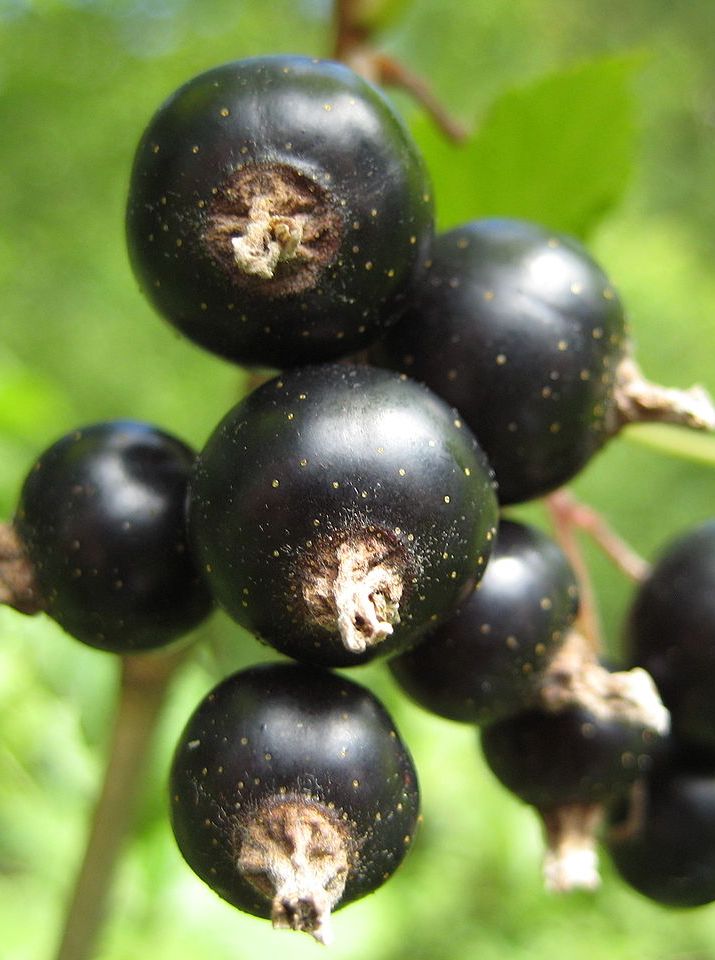 Blackcurrant Cordial
Blackcurrant Cordial450g blackcurrants. stalks removed and washed
250g caster sugar
500ml water
Juice of one lemon
Place the blackcurrants, sugar and water into a medium saucepan. Dissolve the sugar over low heat, stirring to dissolve the sugar. Once the sugar has dissolved bring the syrup to a gentle simmer. Simmer the fruits for 10 minutes, add the juice and skin of the lemon. Bring the syrup back to simmer for further 5 minutes. Let the cordial cool for 10 minutes and sterilise glass bottle. Pass the cordial through a fine sieve, pour the cordial into the sterilised bottle, cool and keep refrigerated until needed. To serve, dilute the chilled cordial to taste with chilled sparkling or still water and plenty of ice cubes.
The blackcurrant (Ribes nigrum) is a woody shrub in the family Grossulariaceae grown for its piquant berries. It is native to temperate parts of central and northern Europe and northern Asia where it prefers damp fertile soils and is widely cultivated both commercially and domestically. It is winter hardy but cold weather at flowering time during the spring reduces the size of the crop. Bunches of small, glossy black fruit develop along the stems in the summer and can be harvested by hand or by machine. The fruit is rich in vitamin C, various other nutrients, phytochemicals and antioxidants. Blackcurrants can be eaten raw but are usually cooked in a variety of sweet or savoury dishes. The blackcurrant is native to northern Europe and Asia. It was cultivated in Russia by the 11th century when it was present in monastery gardens and also grown in towns and settlements. Cultivation in Europe is thought to have started around the last decades of the 17th century. Macerated blackcurrants are also the primary ingredient in the apéritif liqueur crème de cassis, which in turn is added to white wine to produce a Kir or to champagne to make a Kir Royale.
The raw fruit has high vitamin C content (218% of the Daily Value, DV) and moderate levels of iron and manganese (12% DV each). Phytochemicals in the fruit and seeds, such as polyphenols, have been demonstrated, with ongoing laboratory studies assessing their potential to inhibit inflammation mechanisms of heart disease, cancer, microbial infections orneurological disorders like Alzheimer's disease.
Major anthocyanins in blackcurrant pomace are delphinidin-3-O-glucoside, delphinidin-3-O-rutinoside, cyanidin-3-O-glucoside, and cyanidin-3-O-rutinoside which are retained in the juice concentrate among other yet unidentified polyphenols.
Blackcurrant seed oil is rich in nutrients, especially vitamin E and unsaturated fatty acids, including alpha-linolenic acidand gamma-linolenic acid.
Heinonen, M (2007). "Antioxidant activity and antimicrobial effect of berry phenolics--a Finnish perspective". Molecular nutrition & food research. 51 (6): 684–91. doi:
10.1002/mnfr.200700006.
"Berry fruits: compositional elements, biochemical activities, and the impact of their intake on human health, performance, and disease". Journal of Agricultural and Food Chemistry. 56 (3): 627–9.doi:
10.1021/jf071988k Blackcurrants photo courtesy Schwarze Johannisbeeren Makro
USEFUL CORDIALS.
The medicinal qualities and curative properties of fruits are great, and many calls 'for' the doctor might ¡be avoided by their proper use. In making cordials the purest and best sugar should be used; the spices should be strong and pure. No liquor of any kind should be added. Blackberry, raspberry and dewberry 'cordials are old and reliable remedies for bowel complaints; Strawberry, currant, and grape cordials are excellent stomach tonics; and cordial made from ripe elderberries is said to be almost a specific for dropsical affections.
'Blackberry Cordial.-To 1qt of blackberry juice add 1lb of good white sugar, 1 tablespoonful each of cloves, cinnamon, allspice, and nutmeg. Boil until a rich syrup is formed, then put in bottler: and seal while hot. Give in teaspoonful doses to children of 5 years or over, 'several times a day, less to younger children, and tablespoonful doses to an adult. Dewberry cordial, prepared in the same manner, is also very efficacious in obstinate eases of diarrhoea and dysentery.
Strawberry Cordial.-Mash ¡n quantity of ripe strawberries, and let them stand for several hours. Strain and add 2 lb of the best white sugar to each quart of juice. Boil fifteen 'minutes, and add 1 tablespoonful each of cinnamon and nutmeg. Bottle and seal while hot.
Currant Cordial.-To 1qt of ripe, currant juice add. 2lb of white sugar, 1 tablespoonful each of nutmeg and cinnamon, and boil twenty minutes. Bottle and seal while hot. This cordial is excellent to clear the system of Impurities. Put 1 tablespoonful in tumbler of water and drink. USEFUL CORDIALS. (
1896, December 5).
Australian Town and Country Journal (Sydney, NSW : 1870 - 1907), p. 33. Retrieved from
http://nla.gov.au/nla.news-article71301797
Strawberry Cordial
Makes around 2 litres of cordial
1kg crushed strawberries
2 unwaxed lemon, thinly sliced
1.8kg caster sugar
1litre of water
Place the strawberries and lemon in a large glass bowl with the sugar and citric acid. Bring the water to the boil and once boiled, pour it into the bowl and stir until all the sugar has dissolved. Leave to cool, cover and place in a fridge for 4 days. Strain through a muslin and decant into sterilised bottles. Keeps in the fridge for up to 6 months. This one tastes delicious with water, lemonade and it can be mixed with wine for that perfect summer drink (adults only!). or mix with water 1:10 and freeze for healthy Summer ice blocks.
Lime Cordial
1 1/2 cups water
3/4 cup sugar
3/4 tsp citric acid
1/2 tsp tartaric acid
2/3 cup fresh-squeezed lime juice (about 5 large limes)
Rind of 3 limes cut into pieces
Let your limes reach room temperature before juicing! You will get more juice from each fruit if you follow the rules: warm it, roll it, cut it.
Stir acids and sugar together. Separately, bring water to a boil then add the sugar mixture. Stir constantly until the sugar is fully dissolved. Turn off the heat and add lime juice and rind and stir well. Turn the heat back on and allow to simmer for 1-2 minutes. Remove from heat, cover and allow to cool.
Place the mix into a well-sealed container and refrigerate overnight. Strain the lime rinds and pour into an empty, clean bottle with tight-fitting lid.
Place back in the refrigerator and allow to sit for another day before using. Keep refrigerated. You can find citric acid in many grocery stores and tartaric acid online, at home brew and wine suppliers or natural food stores.
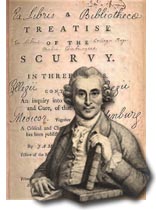
In 1753, James Lind discovered that consuming citrus fruits cured people affected by scurvy, a disease rife throughout the navy. Captain Cook adopted his suggested solution of a daily ration of lemon or lime juice to all sailors during his long trips. This proved highly successful with a hugely reduced death rate.
From 1795, it became normal practice throughout all long voyages within the Royal Navy, for sailors to receive a daily ration of lemon or lime juice. This quickly gave rise to the nickname "limeys" amongst non-British sailors, which arises in the early 19th century. The preservation of the fruit juice at this time was usually done through the addition of 15% rum.
Lauchlin Rose patented the method used to preserve citrus juice without alcohol in 1867. He had realised that by preserving with sugar rather than alcohol it opened a product up to a far wider market. The first factory producing lime juice was set up by Rose on Commercial Street in Leith, Scotland in 1868. This was located conveniently adjacent to the Old East Dock (built during the Napoleonic War but now infilled). This aided both in the supply of limes (which do not grow in the UK), and in its juxtaposition to what was then Scotland's principal harbour for the Royal Navy. The limes at this time largely came from Dominica in the West Indies. In 1893 Rose purchased plantations there to ensure his supply. This was further supplemented by plantations from Africa from the region now called Ghana. From -Made in Scotland, Carol Foreman, ISBN 978-1-84158-725-7
Bickford's Australia, a beverage manufacturer based in South Australia, produces traditional cordials, soft drinks, and iced coffee mix originally manufactured by A. M. Bickford & Sons, a pharmaceutical chemist founded by Anne Margaret Bickford in 1864. In 1999, the brandname was acquired by the Kotses family and later renamed Bickford's Australia, after which the brand saw a revival in popularity with the introduction of new flavours and products. In 2006, Bickford's lime juice cordial was recognised by the National Trust of South Australia as a Heritage Icon. Today, Bickford's cordials, soft drinks, iced coffee and milkshake mixes remain widely available in supermarkets across Australia.
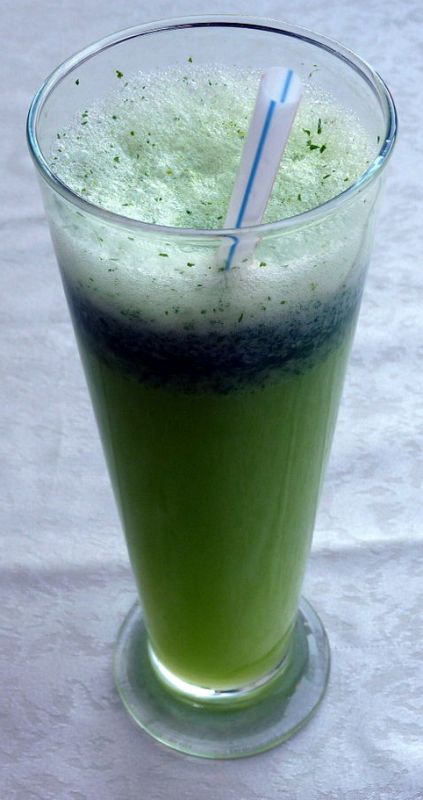 Mint and Lemon Drink
Mint and Lemon DrinkA great Summer refresher and palate cleanser
1/2 cup (packed) chopped fresh mint leaves
1/3 cup chopped fresh ginger
1/3 cup honey
2 cups boiling water
1/3 cup fresh lemon juice
1 1/2 cups (about) cold water
Ice cubes
Fresh mint leaves
Lemon slices
Combine chopped mint, ginger, and honey in medium bowl. Add boiling water. Let steep 30 minutes. Strain into 4-cup glass measuring cup, pressing on solids to extract liquid. Add lemon juice and enough cold water to measure 4 cups total. (Can be prepared 1 day ahead. Cover and refrigerate.)
Fill glasses with ice cubes. Add lemonade. Garnish with mint leaves and lemon slices and serve.
Lemon and Mint II
120g sugar
50ml hot water
40g fresh mint leaves
250ml cold water
6 lemons, juiced
4 mint leaves, for garnish
Stir the sugar into the hot water. Place mint leaves, water, lemons and hot water/sugar in a blender. Blend until mint leaves are evenly chopped.
Cool the mixture in the refrigerator for an hour. Serve in cold glasses (refrigerate them for 15 minutes) with mint.
Mint was originally used as a medicinal herb to treat stomach ache and chest pains. There are several uses in traditional medicine and preliminary research for possible use in treating irritable bowel syndrome.
Photo: Limonana (mint lemonade) served in Damascus, Syria – courtesy Bernard Gagnon
Ginger Beer
Gingerette Syrup
1 cup sugar
1/2 cup water
2 tbsp grated fresh ginger
Ginger Beer Ingredients
1/8 tsp active dry yeast
Ginger syrup
3 tbsp freshly squeezed lemon juice
7 cups filtered water
You will also need
Clean 2-liter plastic soda bottle, funnel
Gingertte syrup Peel a chunk of the ginger with the tip of a teaspoon—the papery skin scrapes right off—and grate it, using the fine side of your grater. Place the ginger, sugar, and water in a saucepan over medium heat and stir until the sugar is dissolved. Turn off the heat and allow the mixture to steep for an hour.
For the full ginger beer experience, place a funnel in the top of the bottle. Sprinkle the yeast in, followed by the syrup, lemon juice, and water.
Put the lid on the bottle and shake the concoction until the yeast is dissolved. Stow it on a shady shelf or in your pantry out of direct sunlight for 2-3 days, or until fizz is achieved. At this point it is ready to drink, and must be stored in the refrigerator to prevent further fermentation. Don't forget about the bottle, or the pressure will build up so much that it may explode!
Ginger Beer – non Carbonated
600mls water
4 oz fresh ginger, unpeeled and finely grated
1/2 oz fresh lime juice
2 tablespoons light brown sugar
Finely grate ginger. In a pot, bring water to a boil, and shut off heat. Add grated ginger and lime juice. Cover and let stand for one hour.
Add the light brown sugar and stir well to dissolve. Strain the liquid through a fine strainer. Let cool. Important: When you are straining the ginger through the strainer, take a spoon or ladle and firmly press down on the ginger to extract its flavor. The strongest part of the ginger essence is still hiding in there, and needs to be pressed out.
Pour the cool liquid through a funnel into a covered bottle or storage container. Shake well before using. Ginger beer can be stored for up to 2 weeks in the refrigerator. Try to use when fresh, as the strength of the ginger fades each day, and the ginger beer eventually starts to ferment. Shake well before using.
Ginger (Zingiber officinale) is a flowering plant whose rhizome, ginger root or simply ginger, is widely used as a spice or a folk medicine.
The origin of "ginger" is from the mid-14th century, from Old English gingifer, from Medieval Latin gingiber, from Latin zingiberi, from Greek zingiberis, from Prakrit (Middle Indic) singabera, from Sanskrit srngaveram, from srngam "horn" + vera- "body", from the shape of its root. But this may be Sanskrit folk etymology, and the word may be from an ancient Dravidian name that also produced the Tamil and Malayalam name for the spice, inchi-ver, from inchi "root." cf. gin (v.). The word probably was readopted in Middle English from Old French gingibre (modern French gingembre).
In 100 grams, ground dried ginger (10% water) provides numerous essential nutrients in high content, particularly the dietary mineral manganese as a multiple of its Daily Value (DV, table). In a typical spice serving amount of one US tablespoon or 5 g, however, ginger powder provides negligible content of essential nutrients, with the exception of manganese present as 79% of DV (USDA database).
In limited studies, ginger was found to be more effective than placebo for treating nausea caused by seasickness, morning sickness, and chemotherapy, although it was not found superior to placebo for treating postoperative nausea. Some studies indicate taking ginger during pregnancy may cause harm to the fetus or increase the mother's risk of bleeding.
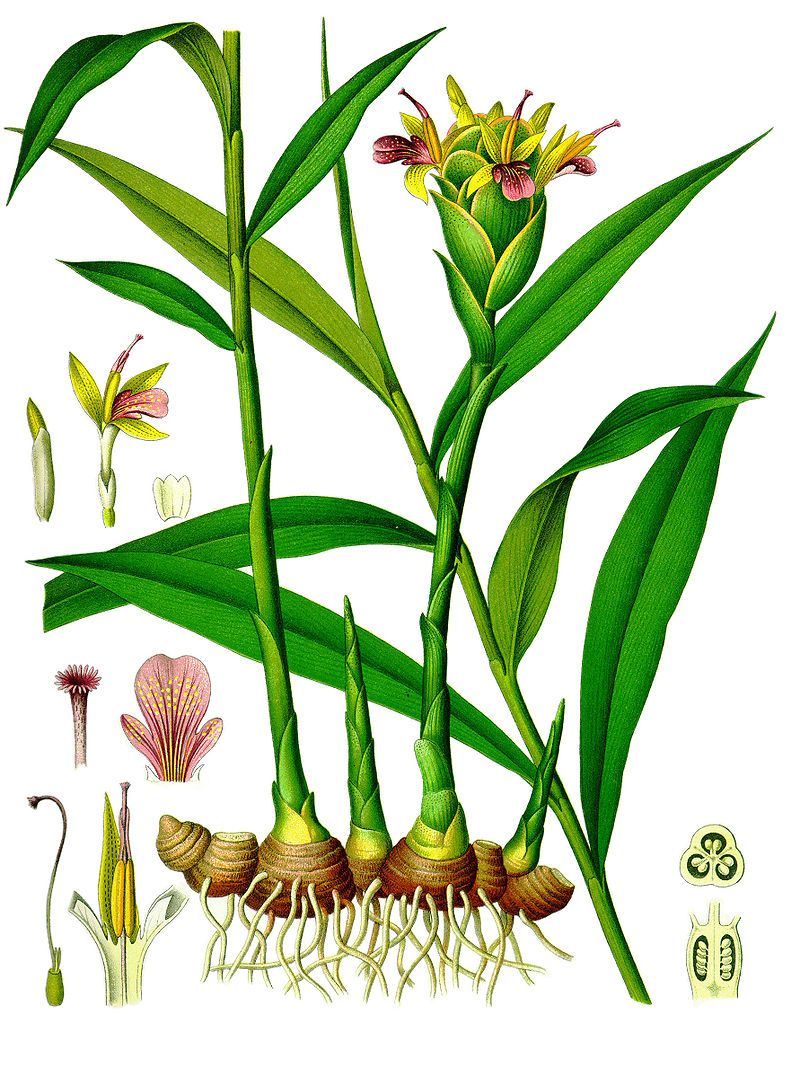
Zingiber officinale. Franz Eugen Köhler, Köhler's Medizinal-Pflanzen. 1897
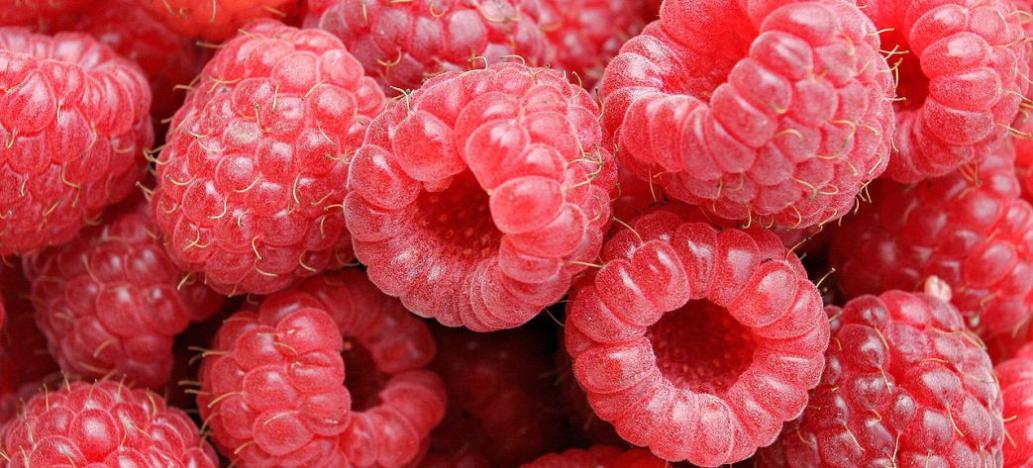
 Blackcurrant Cordial
Blackcurrant Cordial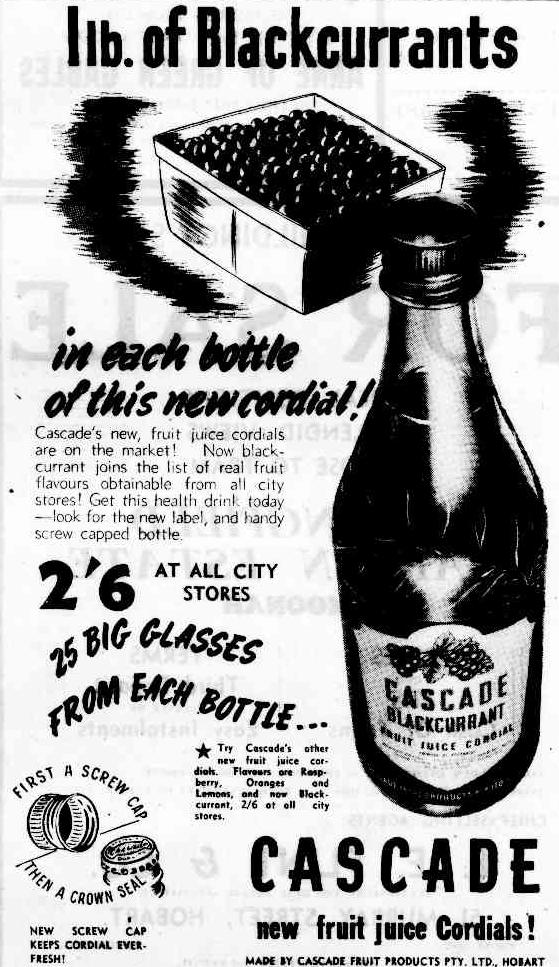
 In 1753, James Lind discovered that consuming citrus fruits cured people affected by scurvy, a disease rife throughout the navy. Captain Cook adopted his suggested solution of a daily ration of lemon or lime juice to all sailors during his long trips. This proved highly successful with a hugely reduced death rate.
In 1753, James Lind discovered that consuming citrus fruits cured people affected by scurvy, a disease rife throughout the navy. Captain Cook adopted his suggested solution of a daily ration of lemon or lime juice to all sailors during his long trips. This proved highly successful with a hugely reduced death rate. Mint and Lemon Drink
Mint and Lemon Drink
